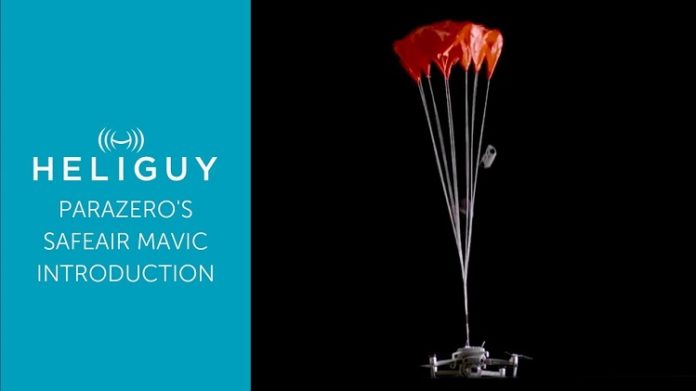Parachutes offer a quaint but effective safety measure for commercial drone operations, particularly those flying near people or with expensive payloads. UK drone retailer and DJI distributor Heliguy has today confirmed plans to sell ParaZero’s SafeAir parachutes, which can be used with a range of DJI drones to improve safety and minimise damage in the case of a flight failure.
- M200 Series. Compatible with DJI Matrice 200, Matrice 200 V2, Matrice 210, Matrice 210 V2 and Matrice 210 RTK. It is not compatible with the Matrice 210 RTK V2 model.
- M600 Pro. Compatible with different antenna configurations including D-RTK model.
- DJI Phantom 4 (excluding RTK model).
- Mavic Pro Series.
- Mavic 2 series, including the Mavic 2 Enterprise Dual and Zoom (excluding modular accessories).
The SafeAir system monitors the drone’s key flight parameters for anomalies. The parachute deploys automatically in the case of a catastrophic flight failure, protecting those below and reducing the risk of payload and drone damage.
ParaZero SafeAir also includes a black box feature, which collects and stores flight data for post parachute deployment analysis. On top of that, the system is entirely reusable and has been designed to be easy to repack.
Heliguy test ParaZero’s safety system
Before making it available to customers, Heliguy took ParaZero’s AirSafe system for a spin and tested it by simulating a power failure with a DJI M210.
Ben Shirley, Heliguy’s Head of Safety said, “The demonstration was very successful and the chute deployed almost instantaneously once the motor stop was initiated at a height of 55m. The chute then fully deployed within an approximate 10m decent and the aircraft landed about 40m from the drop point. The only damage to the Matrice was to the landing gear and Lightbridge antenna, both of which snapped on impact.
Even with the cost of this repair, coupled with the price of the parachute and repackaging costs, you would still be saving a decent amount of money, compared to if you didn’t have the parachute. The aircraft handling after fitting the parachute system was virtually indistinguishable, although obviously flight time was marginally reduced due to the increased mass. I was very impressed by the ease of use of the system which integrates easily into the aircraft pre-flight checks and the indicator LED provides added assurance that the system is armed.”



